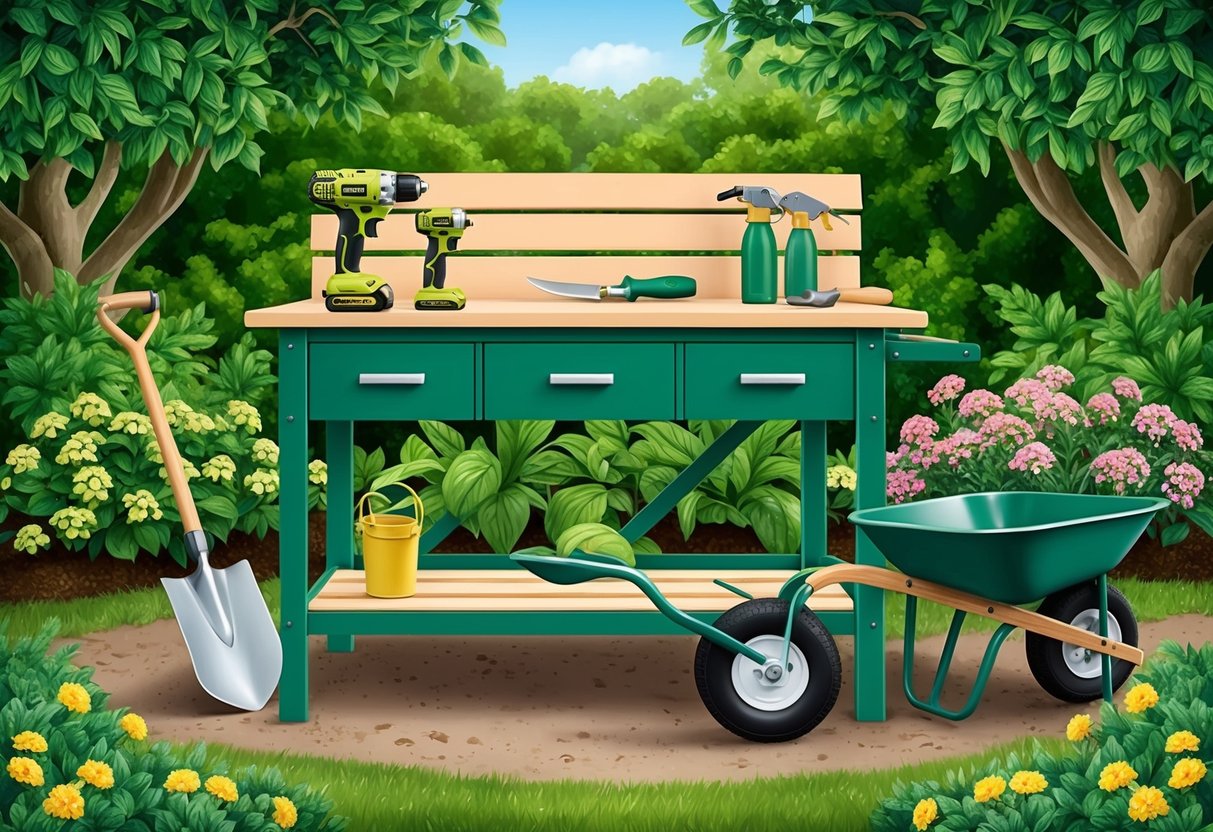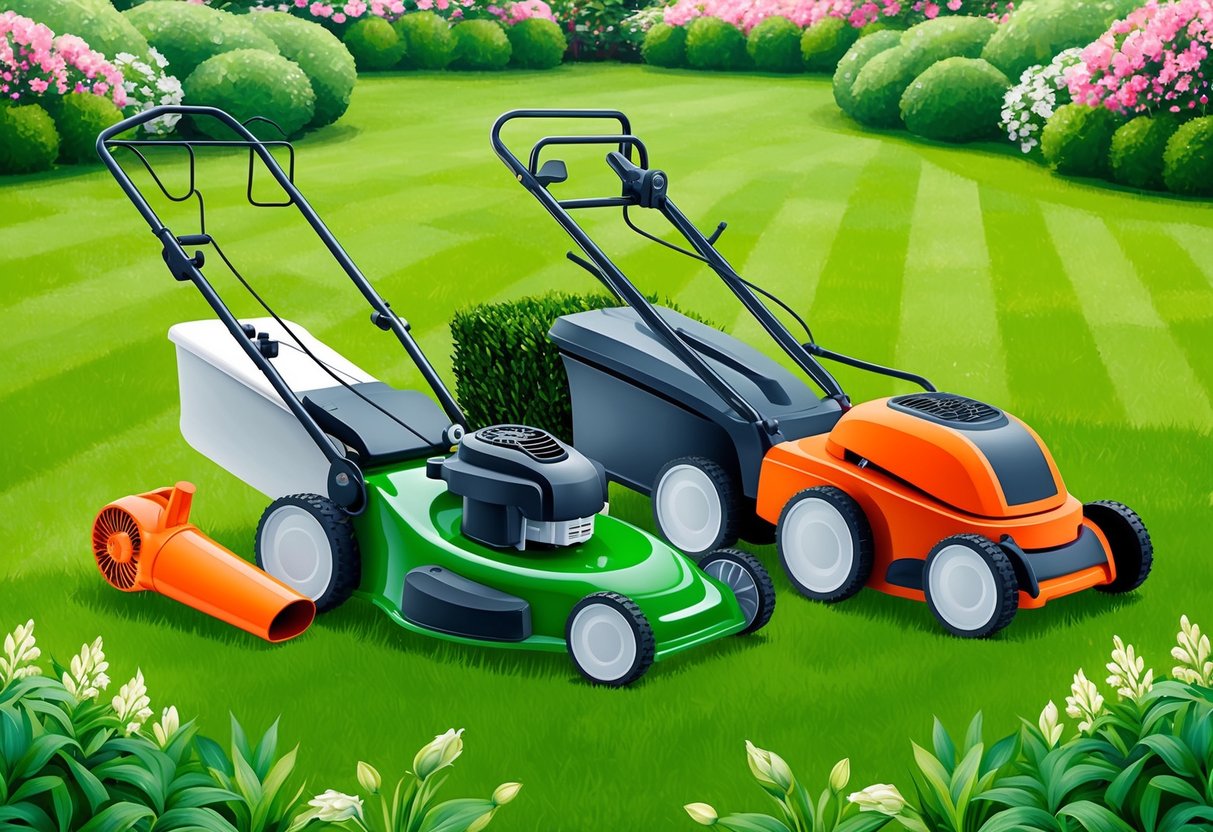
Efficient Lawn Maintenance Machines

Lawn mowers are central to keeping grass even and healthy in gardens of any size. Advancements in technology have introduced options that make regular lawn care simpler, faster, and less physically demanding.
Advantages of Modern Lawn Mowers
Modern lawn mowers offer a blend of efficiency, cutting performance, and ease of use. Innovations such as cordless operation, adjustable cutting heights, and lightweight designs allow homeowners to manage their turf with minimal hassle.
Cordless electric mowers, for example, eliminate the need for petrol and reduce noise, making them ideal for residential areas. New models often feature mulching capability and larger grass collection bins.
These elements can save time by reducing stops to empty the clippings and returning nutrients to the soil. For those seeking even greater convenience, robotic mowers handle routine mowing automatically, keeping lawns at the desired length with very little supervision.
Features to consider include blade quality, cutting width, and battery life for cordless models. Reliable brands integrate safety mechanisms to safeguard users during operation, further contributing to the appeal of today’s lawn mower technology.
Proper Care for Your Lawn Mower
Lawn mower maintenance directly affects the longevity and performance of the equipment. Regularly inspecting and cleaning blades is essential to prevent tear damage to the grass and ensure a clean cut.
Removing built-up debris from the mower deck helps prevent rust and blockages, ensuring proper function over time. Sharpening blades at least once per mowing season results in more effective cutting.
For petrol mowers, checking and replacing oil and spark plugs is important to keep the engine running reliably. Electric and cordless mowers should have batteries stored in a dry place and recharged according to manufacturer instructions.
Simple routines like tightening loose bolts, replacing air filters, and cleaning collection bags can greatly extend the operational life of most lawn mowers.
Soil Preparation and Digging Solutions
Proper soil preparation and efficient digging methods are critical steps in successful gardening. Power tools and thoughtfully chosen manual tools help gardeners break up compacted soil, improve aeration, and move materials with less effort.
Using Garden Forks and Hoes Effectively
Garden forks and garden hoes play essential roles in loosening, turning, and aerating soil. Garden forks, sometimes known as digging forks or cultivating forks, feature sturdy tines that penetrate dense soil.
They break up clods, remove stones, and mix in organic matter to enhance nutrient distribution. Choosing a high-quality fork with a comfortable, ergonomic handle reduces hand fatigue during extended use.
For larger or especially tough ground, gardeners can benefit from powered cultivators or electric hoes. These tools speed up the process of breaking new ground and can help blend compost or fertilizer more evenly.
Regular use of hoes with a sharp edge is vital for slicing through weeds at their roots and reshaping planting beds. Both powered and manual hoes allow clear weed management, limiting soil disturbance and preserving the structural integrity of the ground.
For tips on selecting the right type of fork and hoe, Fine Gardening offers an overview of essential soil tools.
Best Practices for Using Wheelbarrows
A wheelbarrow or garden cart is indispensable for transporting soil, compost, and mulch around a garden efficiently. Choosing a wheelbarrow with a sturdy frame and pneumatic tires helps ensure stability and minimizes the risk of tipping, especially on uneven terrain.
Steel trays are durable for heavier loads, while poly trays resist corrosion and are lighter for everyday tasks. For heavy-duty projects, consider wheelbarrows with dual wheels.
These offer extra balance when navigating inclines or loose gravel. Always load heavier materials toward the front and keep each trip manageable; overloading increases the risk of strain and injury.
Proper maintenance extends the lifespan of garden wheelbarrows—keep tires inflated, clean trays after use, and store under cover. For a comprehensive overview of available options and features, visit The Home Depot’s guide to garden tools.
Ergonomic Tools for Comfort and Safety
Using ergonomic garden tools can reduce hand strain, limit fatigue, and prevent injuries during repetitive tasks. Enhanced comfort provided by thoughtfully designed gloves and lightweight hand tools allows gardeners to work longer and more effectively outdoors.
Importance of Gardening Gloves
Gardeners should always prioritize gardening gloves for safety and efficiency. They protect hands from thorns, rough branches, and contaminated soils that can irritate or injure skin.
Quality gloves also prevent blisters during digging, pruning, or raking. Features such as padded palms and reinforced fingertips add extra protection against punctures and abrasion.
Breathable and water-resistant materials help keep hands dry and comfortable during longer gardening sessions. For best results, gloves should fit snugly without restricting movement, allowing for precise handling of small tools.
Garden gloves come in several materials, including leather, nitrile, and cotton. Leather gloves are highly durable and best for heavy-duty yard work.
Nitrile-coated options offer flexibility and are suited for delicate planting. Some gloves are designed with extended cuffs, which shield wrists and lower arms when dealing with thorny or overgrown plants.
Regular cleaning keeps gloves sanitary and extends their life. Gardeners who invest in multiple pairs—each suited to specific tasks—often find better comfort, protection, and longevity throughout the gardening season.